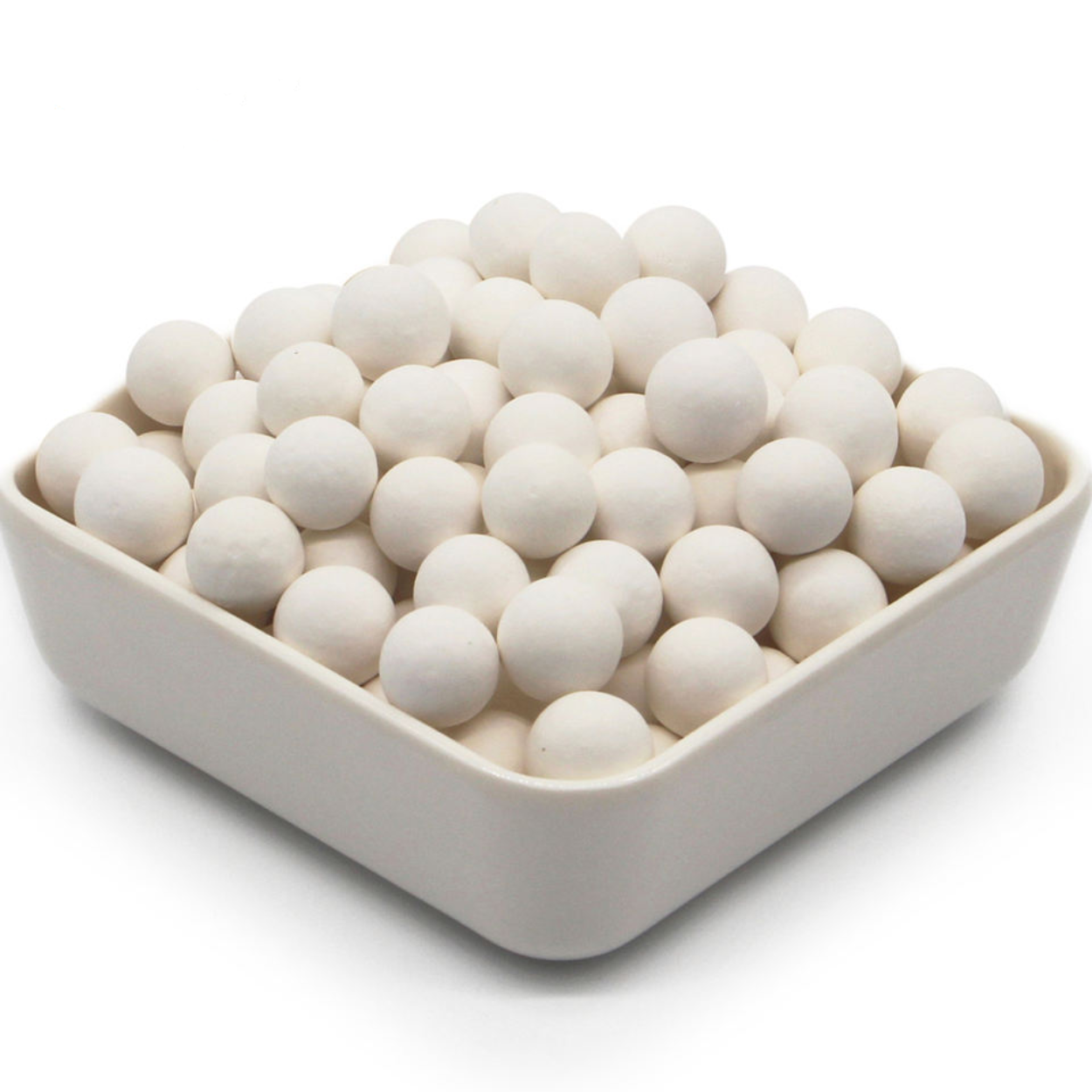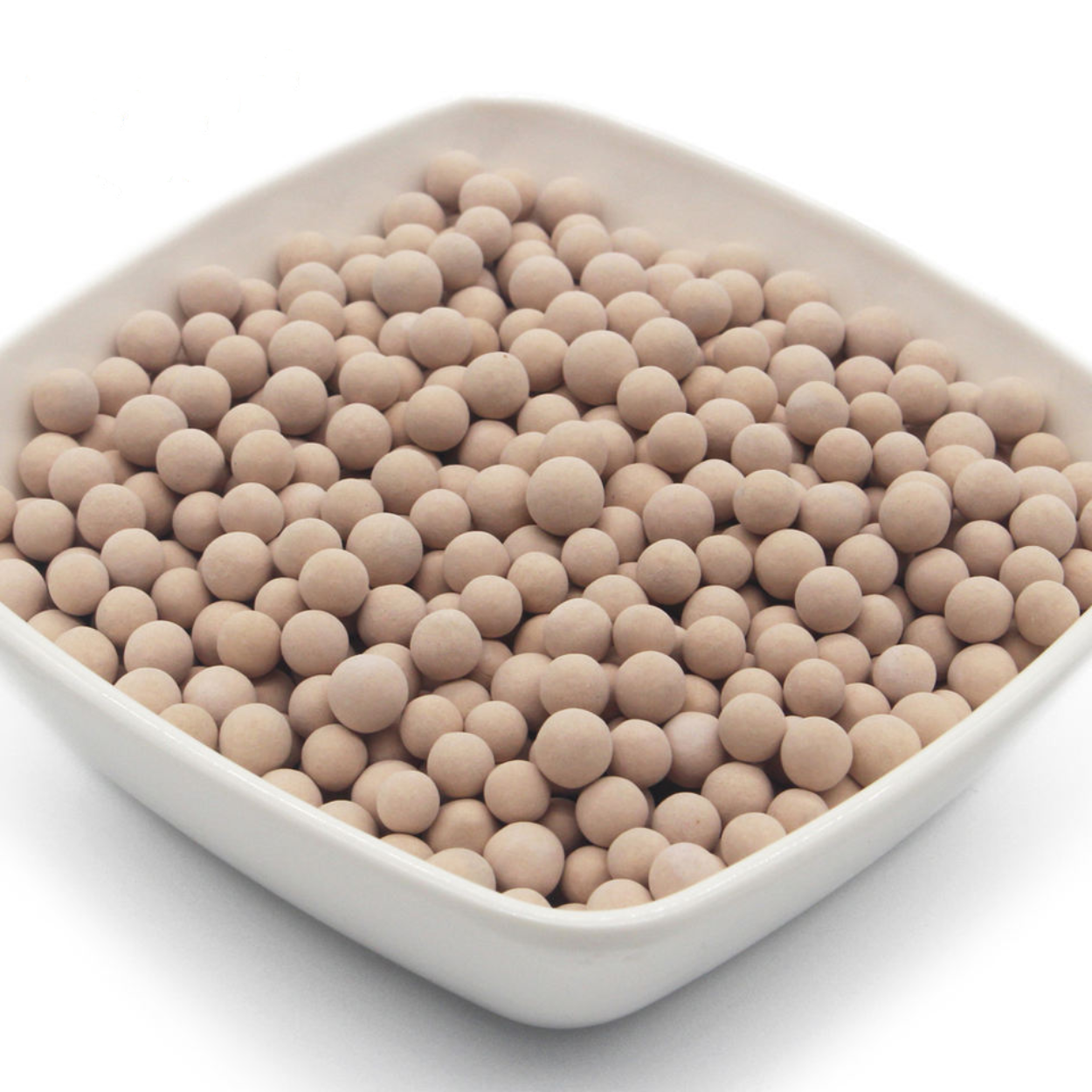
Manufacturer 4A vs 3A Molecular Sieves in LNG Dehydration
LNG dehydration mainly uses 4A molecular sieves for water and hydrocarbon removal, while 3A suits cases needing zero hydrocarbon adsorption.
Molecular sieves are microporous adsorbents used widely in chemical, petroleum, environmental, and medical industries. Their precise pore size and selective adsorption capabilities make them essential for separation, purification, and drying processes.
This guide breaks down five common molecular sieve types—3A, 4A, 5A, 13X, and NaY—highlighting their structure, properties, and key industrial uses.
General formula:
Type Pore Size (nm) Cation Main Adsorbates
3A 0.3 K⁺ H₂O, NH₃
4A 0.4 Na⁺ H₂O, CO₂, CH₄
5A 0.5 Ca²⁺ Normal alkanes (C₃–C₁₄)
13X 0.9–1.0 Na⁺ CO₂, H₂S, benzene
NaY 0.74 Na⁺ Heavy hydrocarbons, VOCs
Requirement Recommended Sieve
Deep drying 3A (small molecules), 4A (general)
Acid gas removal 13X
Normal paraffin separation 5A
Large molecule adsorption NaY, 13X
High-temperature use NaY (high Si/Al ratio)
The five common molecular sieves—3A, 4A, 5A, 13X, and NaY—each offer unique pore structures and adsorption properties suited for specific industrial tasks. Choosing the right sieve enhances process efficiency and reduces energy consumption. As materials science advances, molecular sieve applications will continue expanding across industries.

LNG dehydration mainly uses 4A molecular sieves for water and hydrocarbon removal, while 3A suits cases needing zero hydrocarbon adsorption.

Achieve ultra-deep dehydration of cracked gas with 3A molecular sieves—remove water without ethylene/propylene loss, ensuring catalyst life and product purity.

Home Desiccant Activated Alumina for air compressor drying gas purification wholesale Email WhatsApp Product Inroduction: Desiccant Activated Alumina for air

Home Adsorbent Zeolite 13x Molecular Sieve for Removing Odor From LPG in air Freshener Plant Email WhatsApp Product Inroduction: Adsorbent Zeolite
As a leading molecular sieve manufacturer, we share the latest industry news and insights on adsorbents like molecular sieves, sieve powder, and activated alumina.

Molecular sieves play an irreplaceable role due to its selective adsorption of molecules in petrochemicals, natural gas treatment, air separation, and environmental protection.

3 proven regeneration techniques to extend molecular sieve desiccants lifespan, reduce costs, and ensure stable performance in air separation and gas processing.

13X molecular sieve desiccants ensures efficient gas drying, purification, and VOC removal with high adsorption, regenerability, and mechanical strength.